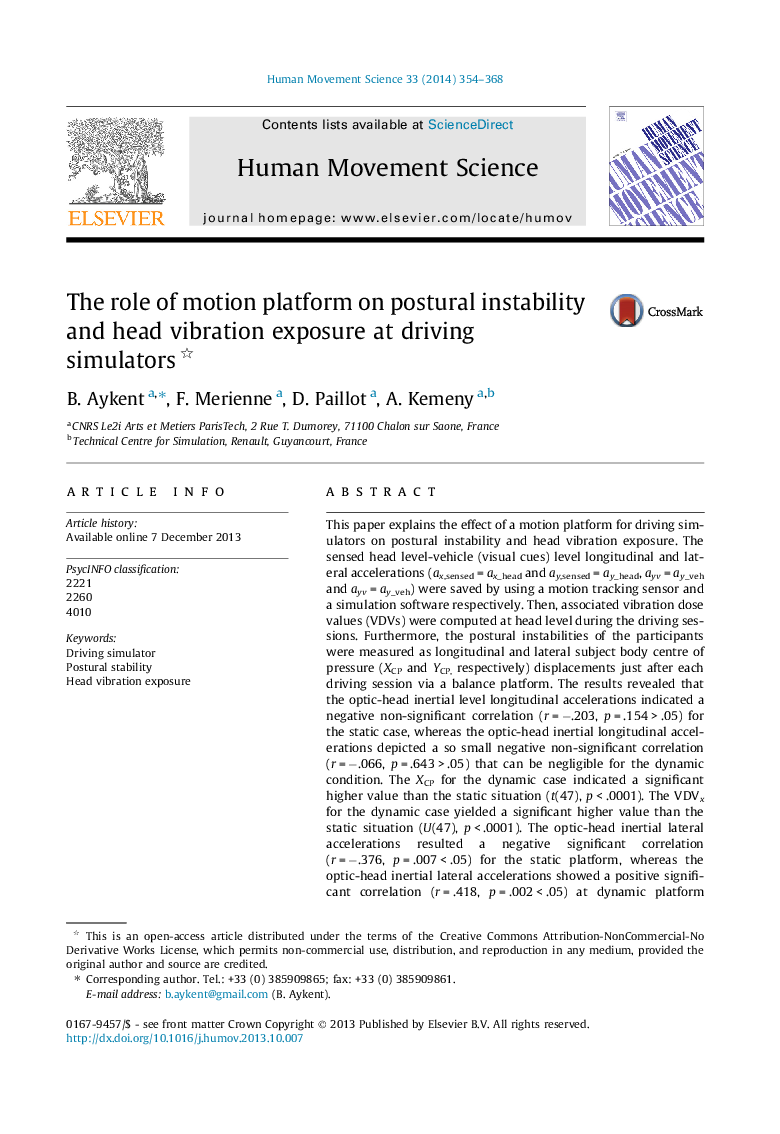| Article ID | Journal | Published Year | Pages | File Type |
|---|---|---|---|---|
| 7292605 | Human Movement Science | 2014 | 15 Pages |
Abstract
This paper explains the effect of a motion platform for driving simulators on postural instability and head vibration exposure. The sensed head level-vehicle (visual cues) level longitudinal and lateral accelerations (ax,sensed = ax_head and ay,sensed = ay_head, ayv = ay_veh and ayv = ay_veh) were saved by using a motion tracking sensor and a simulation software respectively. Then, associated vibration dose values (VDVs) were computed at head level during the driving sessions. Furthermore, the postural instabilities of the participants were measured as longitudinal and lateral subject body centre of pressure (XCP and YCP, respectively) displacements just after each driving session via a balance platform. The results revealed that the optic-head inertial level longitudinal accelerations indicated a negative non-significant correlation (r = â.203, p = .154 > .05) for the static case, whereas the optic-head inertial longitudinal accelerations depicted a so small negative non-significant correlation (r = â.066, p = .643 > .05) that can be negligible for the dynamic condition. The XCP for the dynamic case indicated a significant higher value than the static situation (t(47), p < .0001). The VDVx for the dynamic case yielded a significant higher value than the static situation (U(47), p < .0001). The optic-head inertial lateral accelerations resulted a negative significant correlation (r = â.376, p = .007 < .05) for the static platform, whereas the optic-head inertial lateral accelerations showed a positive significant correlation (r = .418, p = .002 < .05) at dynamic platform condition. The VDVy for the static case indicated a significant higher value rather than the dynamic situation (U(47), p < .0001). The YCP for the static case yielded significantly higher than the dynamic situation (t(47), p = .001 < 0.05).
Related Topics
Life Sciences
Neuroscience
Cognitive Neuroscience
Authors
B. Aykent, F. Merienne, D. Paillot, A. Kemeny,
